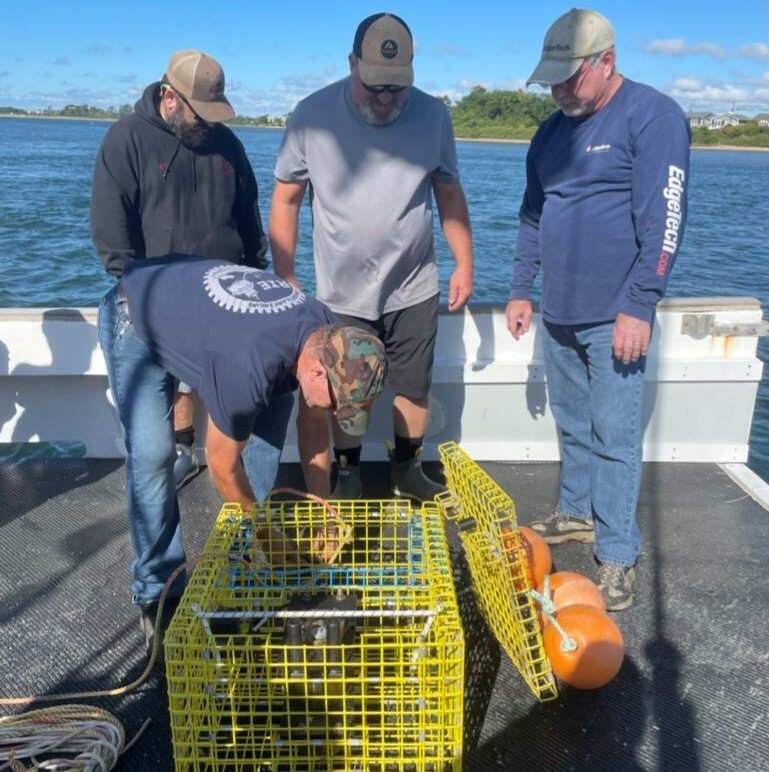On Thursday, August 29, 2024, NOAA Fisheries hosted a webinar looking at the future of ropeless, or pop-up, gear for the New England lobster fishery. NOAA’s Jennifer S. Goebel pointed out that the Atlantic Large Whale Take Reduction Team had recommended that large swaths of the Gulf of Maine and waters south of Cape Cod be subject to emergency closures and open to fishing with ropeless gear only.
Goebel noted, however, that the lobster and Jonah crab fisheries are currently in compliance with the Endangered Species Act and the Marine Mammal Protection Act; “the recommendations from the team were put on hold.” Goebel cited other legislation that calls for innovation in the adoption of gear technology as justification for efforts aimed at developing ropeless gear. “That seems to support the development of ropeless gear,” Goebel said, before outlining a 4-year plan to develop the technology and have final rules in place.
Eric Matzen, a researcher at the Northeast Fisheries Science Center (NEFSC), presented the current state of the technology and its development. He discussed the establishment of a gear lending library that will allow fishermen to experiment with various types of ropeless gear, offer feedback to manufacturers, and build a database of experience to help policymakers understand the challenges of using ropeless gear. He also discussed the importance of integrating acoustic gear with existing programs like TimeZero.
Justin Tufariello, a researcher at MITRE, a non-profit private research company funded by the federal government, followed Matzen and discussed MITRE’s work on modeling the challenges of using ropeless gear in the real world. “In some cases, GPS localization may be sufficient,” said Tufariello, noting, however, that fishermen will need to know where traps are in areas of high gear density and conflict with mobile gear. “Our focus is on the acoustic interoperability of on-demand gear, primarily in the Northeast,” he said. Noting that with over a dozen manufacturers working on pop-up gear—where buoys or flotation bags on submerged lobster traps might be released by an acoustic trigger—interoperability of various systems may be necessary for gear localization, scalability, and enforcement.
“This hasn’t been demonstrated at scale in busy fixed gear fisheries and in the presence of mobile groundfish and scallop fishing operations,” said Tufariello. In addition, he discussed the impacts of acoustics on the marine mammals the gear is meant to protect, the ability to locate lost traps, and the effects of the operating environment on the technology.
“There are problems related to the geometry and the physics involved,” he said. “The signal emitted from the vessel will bounce around the channel, creating a sort of fun-house mirror effect so that multiple versions of the signal are received by the trap. Not to mention the motion of the vessel, and the time dilation and doppler effects caused by that.”
Tufariello’s presentation delved further into the physics of acoustics in the marine environment. “In the presence of large breaking waves performance will degrade,” he said, raising the possibility of vessels going blind in terms of finding gear in rough weather.
Despite the many challenges, all the presenters on the webinar expressed optimism that they would solve the problems they face and have a scaled-up solution for pop-up gear within the NOAA Fisheries timeline.







